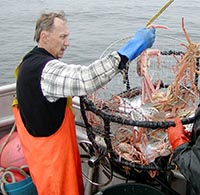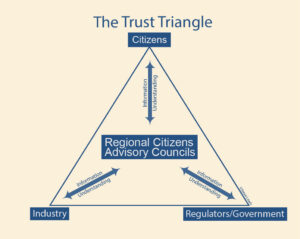Volunteer profile

Steve Lewis hails from a large family of farmers and ranchers who settled in Colorado and Nebraska in the late 1800s. When he was little, his father was in the U.S. Navy and often at sea, so Lewis spent a lot of time at his Uncle Chester’s house.
“It was a typical high-plains two story farmhouse,” Lewis recalls. Uncle Chester loved hunting and fishing, and Lewis has vivid memories of his uncle’s trophies from a trip to Alaska.
Along the stairwell, a Kodiak brown bear pelt reached from bottom of the first floor almost to the ceiling of the second floor. Little Lewis had to run past that bear to get to his bedroom, where a moose head hung.
“I KNEW that the other half of that moose was on the other side of that wall, and he was going to come through and get me.”
“So that was my introduction to Alaska.”
North to Alaska
Fortunately for the Council, that imaginative kid never lost his fascination with the state.
“Sometimes I wonder about that, what might have happened,” Lewis ponders as he reflects on the series of decisions that brought him here. “I don’t know where you start making those decisions on your own, a critical one for me was deciding to go to Colorado School of Mines as opposed to New Mexico.”
That’s where Lewis met Savannah, his wife of 45 years. She also had dreams of the 49th state. So in 1978, when presented with a choice between an offer to join a post-graduate naval architecture program at UC Berkley, and a job in Alaska, the pair headed north. After working on the U.S. Geologic Survey’s exploration project in the National Petroleum Reserve in Alaska, Lewis accepted a position drilling exploratory wells in the Bering Sea.
“We drilled further offshore than ever before,” Lewis recalls. The potential for profit was large. If he needed something that didn’t exist, he was instructed to have it built.
“That was lots of fun! I was thirty-some-years-old with big toys and big responsibility,” Lewis says. “We had less than 20 people in the office and we spent $386 million dollars over three years. It was perfect, and the job was executed flawlessly.”
After that, Lewis mostly implemented oil well designs. He specialized in remote hostile environments, both onshore and offshore, primarily in high latitudes managing drilling operations, analyzing geologic data, doing environmental analyses, contracting, permitting, and finally, he says, “putting all that together, taking it to the field, and making it work.”
Over the years, Lewis worked in the Continental U.S. and Alaska, the Bering Sea, the Beaufort Sea, the Gulf of Mexico, the North Sea and Norwegian Sea, the South China Sea, and the Barents Sea.
The Lewises left Alaska in 1985, but planned to return eventually. While they were away, they heard the news about the Exxon Valdez oil spill while under sail in the Caribbean, having just made a trans-Atlantic passage. Their Alaskan hailing port and flag attracted a lot of questions.
“I found myself in the somewhat strange situation of explaining to mariners, both recreational and professional, who had never seen snow, why you had to drive around an iceberg rather than simply go through it.”
Joining the Council
When they moved back in 1997, they settled in Seldovia, where they found a community, and a state, still reeling from the Exxon Valdez spill.
Soon, a unique opportunity arose to use his industry and maritime experience, and Lewis was recruited to the seat on the Council as a representative of his new community.
“I walked in and was introduced, and there was reference to my profession.” A few members seemed a little taken aback, Lewis recalls. “Tom Copeland [then-representative from the Oil Spill Region Environmental Coalition] on the other hand went ‘hot damn, somebody who probably knows something about what we are talking about.’”
Since then, he has volunteered countless hours towards the Council’s mission, at first on the Board and for the Terminal Operations and Vessel Traffic System Committee, and now as chair of the Council’s Port Operations and Vessel Traffic System Committee.
“I think that has been one of my primary values to the organization,” Lewis says. “I know an awful lot about the internal machinations of the industry and I completely understand the pressures that are applied to individuals in the level of management position that we deal with on a regular basis.”
Sharing information builds trust

Lewis says he’s been frustrated with the slow pace of information coming from Alyeska about the new vessels and training for new crews who will take over oil spill prevention and response in July.
“That absolutely does not create trust.”
“There are going to be improvements in that the transition will involve new equipment and some of it is advanced technology. There is no improvement inherent in changing the people.” Lewis is concerned that some may experience their first cold, dark Alaska voyage and wonder what they got themselves into.
“Forty-five years in the industry, watching people moving around internationally, into new operational environments, I’ve seen that. I’ve done that. I’ve walked out on deck and gone ‘good lord that’s a 60-foot wave that just went by, and I asked for this?’”
Lewis said he has seen mistakes made first-hand. “That accounts for a little bit of my passion on the topic.”
“If there’s a big ‘oops’, it costs you [the oil industry] some money and you’re on down the road. If there’s a big ‘oops,’ it costs us our lifestyles, our investments, and our emotional well-being.”